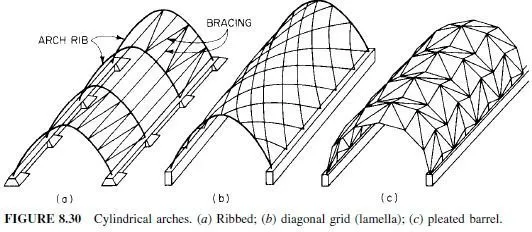Most structural steels can undergo large deformations before rupturing. For example, yielding in ASTM A36 steel begins at a strain of about 0.0012 in per in and continues until strain hardening occurs at a strain of about 0.014 in per in. At rupture, strains can be on the order of 0.25 in per in. These material characteristics affect the behavior of steel members strained into the yielding range and form the basis for the plastic theory of analysis and design.
The plastic capacity of members is defined by the amount of axial force and bending moment required to completely yield a members cross section. In the absence of bending, the plastic capacity of a section is represented by the axial yield load
The shape factor indicates the additional moment beyond initial yielding that a section can develop before becoming completely yielded. The shape factor ranges from about 1.1 for wide-flange sections to 1.5 for rectangular shapes and 1.7 for round sections.
For members subjected to a combination of axial force and bending, the plastic capacity of the section is a function of the section geometry. For example, one estimate of the plastic capacity of a wide-flange section subjected to an axial force P and a major-axis bending moment Mxx is defined by the interaction equation

When one section of a member develops its plastic capacity, an increase in load can produce a large rotation or axial deformation or both, at this location. When a large rotation occurs, the fully yielded section forms a plastic hinge. It differs from a true hinge in that some deformation remains in a plastic hinge after it is unloaded.
The plastic capacity of a section may differ from the ultimate strength of the member or the structure in which it exists. First, if the member is part of a redundant system (Art. 3.28), the structure can sustain additional load by distributing the corresponding effects away from the plastic hinge and to the remaining unyielded portions of the structure. Means for accounting for this behavior are incorporated into inelastic methods of analysis.
Secondly, there is a range of strain hardening beyond Fy that corresponds to large strains but in which a steel member can develop an increased resistance to additional loads. This assumes, however, that the section is adequately braced and proportioned so that local or lateral buckling does not occur.









